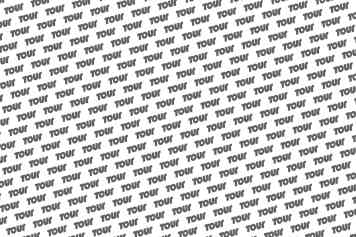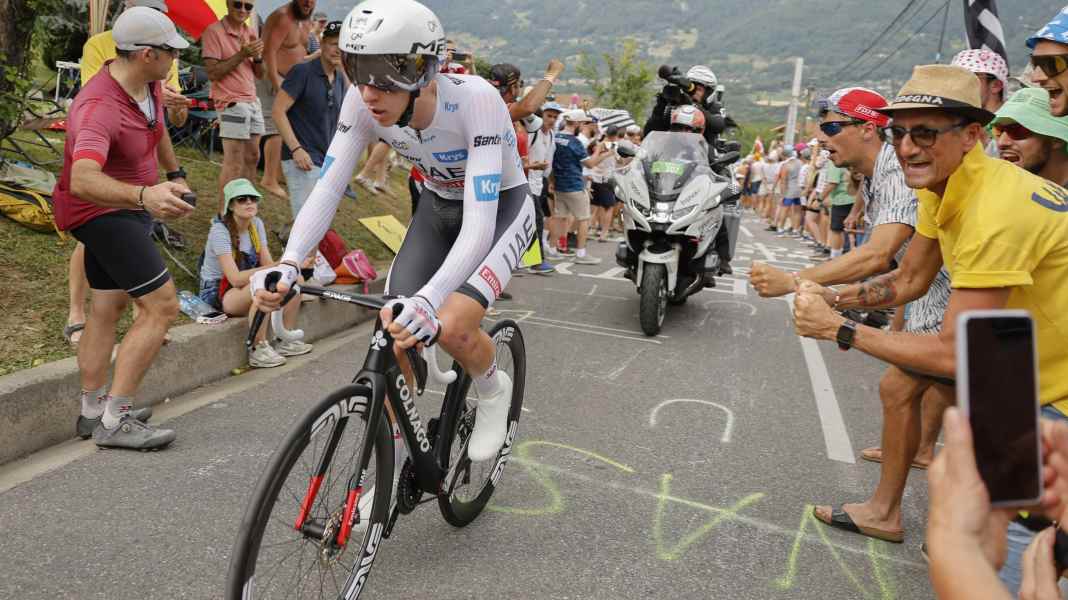
Tour de France 2025 - Stage 13: Time Trial Loudenvielle - Peyragudes | 10.9 Kilometers
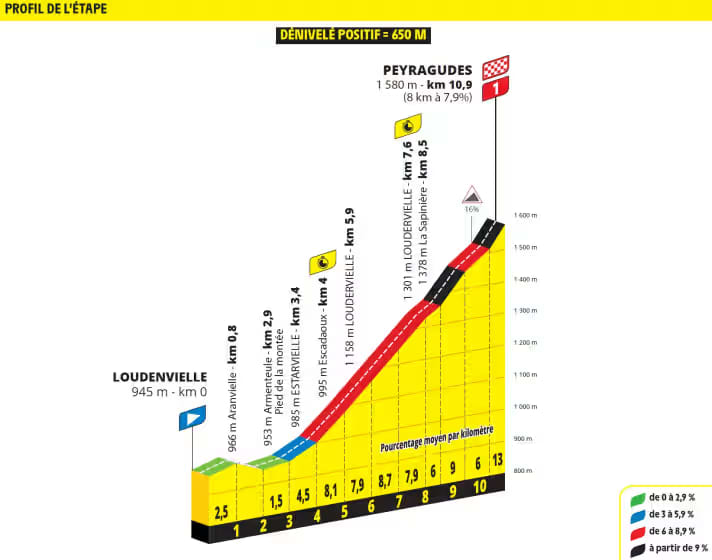
The shortest stage of the Tour is the mountain time trial on the thirteenth stage. 650 meters of elevation gain must be climbed in just 10.9 kilometers. The start is gentle, with the second kilometer even slightly downhill. After four kilometers, the gradient increases. The average gradient is 7.9%. The final climb to the Peyragudes airfield is particularly steep. For a short time, riders will have to pedal up to a 16% gradient.
From a technical point of view, it is risky to cover the necessary gear range for this stage with a 1x12 gear ratio, as speeds range from 14 to 65 km/h. This would only work if the rider could briefly accelerate, which is unlikely at the end of the time trial. However, a plummeting cadence is not helpful either. A two-gear strategy is therefore likely.
Which brings us to the question of the best bike. The start of the route is fast, so a time trial bike has a clear advantage here. On the mountain, however, aerodynamics are not entirely irrelevant, as the best riders reach speeds of just under 30 km/h on the flatter sections (6% gradient).
There are three strategies to choose from:
1. Start on a TT bike and switch to a road bike on the mountain
2. Trim the road bike with attachments to a TT bike and ride it through
3. Use a conventional road bike without aero bar extensions
To identify the best setup, we feed our simulation with our estimates for Tadej Pogačar. We don't know the exact specifications of his time trial bikes and the resulting overall aerodynamics. But we can make informed assumptions and run through a few scenarios.
The number of the day: 11 seconds
According to our calculations, the fastest bikes are the time trial bikes. The TT11 configuration would save 11 seconds compared to a Y1Rs road bike retrofitted with aero bar extensions. Provided the time trial bike weighs 8.0 kilograms. If it weighs 8.5, the lead shrinks to 5 seconds. Without extensions, the V5Rs is the lightest option for Tadej Pogačar, but in our simulation it is slower than the V5Rs or Y1Rs with extensions. The aero benefit compensates for the extra weight.
Pogačar has not had good experiences with bike changes. A bike change easily costs 15 seconds and interrupts the rhythm. In our opinion, this is not an option for this stage. We can look forward to seeing what strategies the teams have come up with.
The configurations for the mountain time trial at a glance*
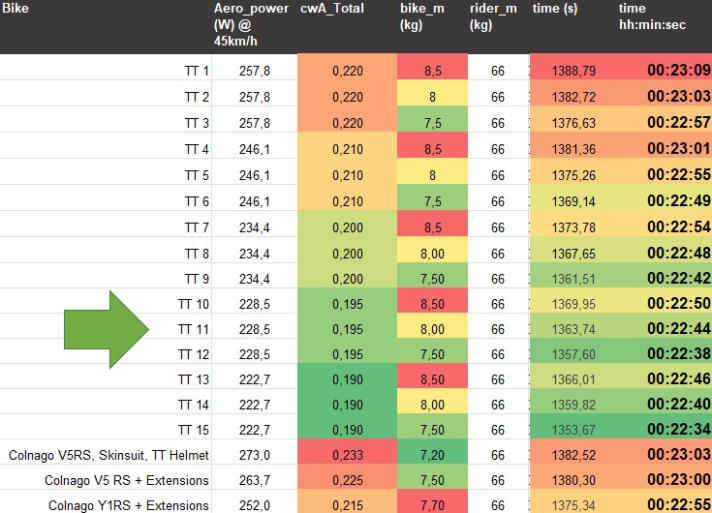
The table shows the calculated travel times for various configurations. TT11 seems to be a realistic scenario. This time trial bike would be slightly faster than the Colnago Y1Rs with an additional aero bar.
Our expert
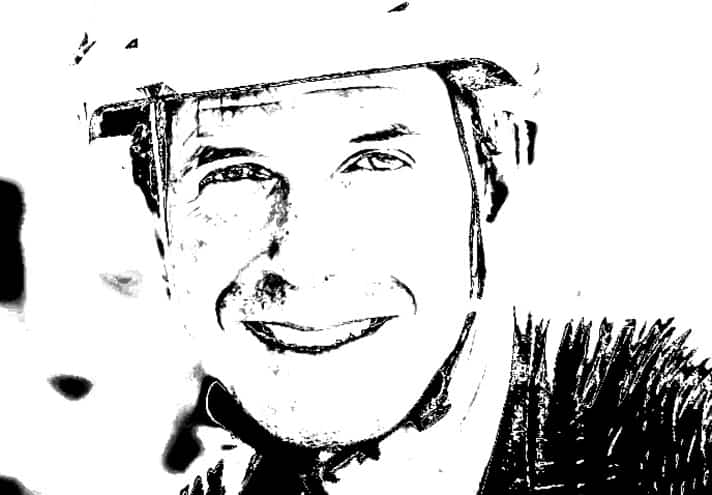
Robert Kühnen studied mechanical engineering, writes for TOUR about technology and training topics and develops testing methods. Robert has been refining the simulation calculations for years, they are also used by professional teams.
